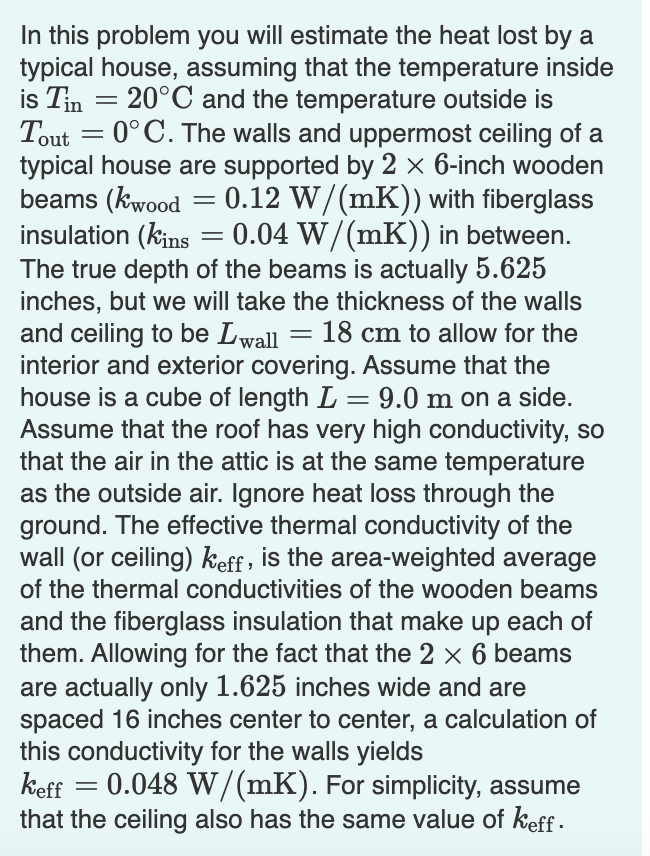In this problem you will estimate the heat lost by a typical house, assuming that the temperature inside is Tin = 20°C and the temperature outside is Tout = 0°C. The walls and uppermost ceiling of a typical house are supported by 2 × 6-inch wooden beams (kwood insulation (kins = 0.04 W/(mK)) in between. The true depth of the beams is actually 5.625 inches, but we will take the thickness of the walls and ceiling to be Lwall interior and exterior covering. Assume that the house is a cube of length L = 9.0 m on a side. Assume that the roof has very high conductivity, so that the air in the attic is at the same temperature as the outside air. Ignore heat loss through the ground. The effective thermal conductivity of the wall (or ceiling) keff , is the area-weighted average of the thermal conductivities of the wooden beams and the fiberglass insulation that make up each of them. Allowing for the fact that the 2 x 6 beams 0.12 W/(mK)) with fiberglass 18 cm to allow for the are actually only 1.625 inches wide and are spaced 16 inches center to center, a calculation of this conductivity for the walls yields keff that the ceiling also has the same value of keff - 0.048 W/(mK). For simplicity, assume
Energy transfer
The flow of energy from one region to another region is referred to as energy transfer. Since energy is quantitative; it must be transferred to a body or a material to work or to heat the system.
Molar Specific Heat
Heat capacity is the amount of heat energy absorbed or released by a chemical substance per the change in temperature of that substance. The change in heat is also called enthalpy. The SI unit of heat capacity is Joules per Kelvin, which is (J K-1)
Thermal Properties of Matter
Thermal energy is described as one of the form of heat energy which flows from one body of higher temperature to the other with the lower temperature when these two bodies are placed in contact to each other. Heat is described as the form of energy which is transferred between the two systems or in between the systems and their surrounding by the virtue of difference in temperature. Calorimetry is that branch of science which helps in measuring the changes which are taking place in the heat energy of a given body.

Trending now
This is a popular solution!
Step by step
Solved in 2 steps with 2 images







